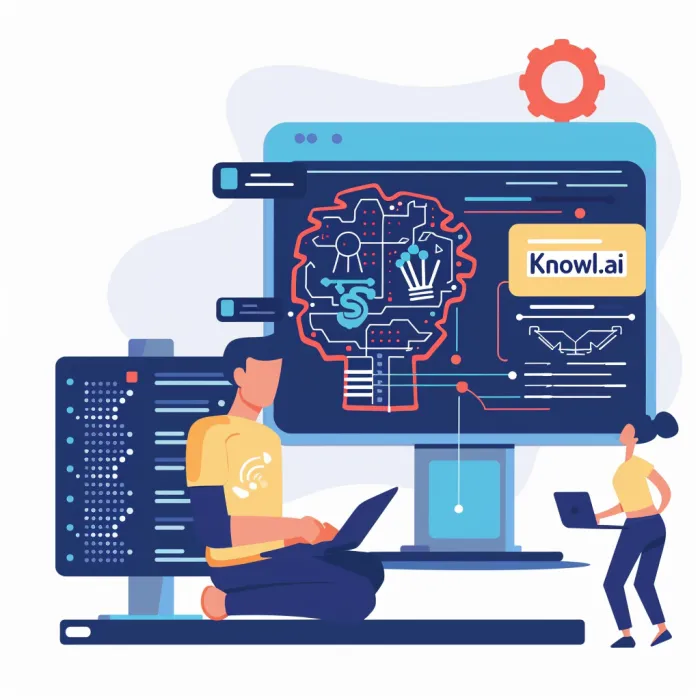Understanding RAML and OpenAPI
Diving into the world of API specifications can often feel like navigating through a dense jungle. Each path—be it RAML or OpenAPI—offers its unique allure, promising to lead you to the heart of efficient and effective API design. But which path is the right one for you? Let’s embark on this exploration together, deciphering the mysteries of RAML and OpenAPI, to uncover the treasures they hold for API developers and product managers alike.
What is RAML and How Does It Differ from OpenAPI?
RAML (RESTful API Modeling Language) and OpenAPI (formerly known as Swagger) are two of the leading specifications designed to describe RESTful APIs. RAML, developed by MuleSoft, offers a succinct way of describing APIs that's easy to read and write, focusing on reusability with traits and resource types. OpenAPI, on the other hand, takes a more verbose approach but provides a standardized and more extensive format that's widely adopted across the industry.
Key Takeaway: RAML is known for its reusability and simplicity, while OpenAPI stands out for its comprehensive standardization and industry-wide adoption.

Key Features of RAML Specification
RAML is praised for its user-friendly syntax, allowing developers to quickly outline the structure of API endpoints, queries, and responses. Its major draw is the use of traits and resource types, which promote DRY (Don't Repeat Yourself) principles by enabling the reuse of common patterns across the API. Additionally, RAML supports modular design, letting developers split their API definitions into multiple files for better organization.
Key Takeaway: RAML excels in providing a streamlined and modular approach to API specification, making it easy to maintain and scale.
Advantages of Using OpenAPI for API Specification
OpenAPI’s strength lies in its universality and support by a vast array of tools for generating documentation, client SDKs, and server stubs. Its format is both human-readable and machine-processable, ensuring that both developers and software can interact with API specifications efficiently. Moreover, being an open-source project under the Linux Foundation, it garners contributions from a wide community, ensuring constant updates and interoperability improvements.
Key Takeaway: OpenAPI is highly versatile, supported by a broad ecosystem of tools, and benefits from community-driven enhancements.
Comparing RAML and OpenAPI
Examining the Syntax of RAML and OpenAPI
When it comes to syntax, RAML utilizes YAML for its specifications, prioritizing readability and conciseness. OpenAPI also supports YAML (and JSON), but its structure is designed to encompass more detailed descriptions, including extensive metadata and richer content types. This makes OpenAPI specifications more verbose but also more expressive in detailing API behaviors.
Key Takeaway: RAML offers simplicity and succinctness in syntax, while OpenAPI provides a more detailed and expressive format.
Differences in Tool Support Between RAML and OpenAPI
Tool support varies significantly between RAML and OpenAPI. While RAML enjoys backing from MuleSoft and its suite of integration tools, OpenAPI leads the pack with widespread support across numerous platforms and services. This includes major API gateways, documentation generators, and design tools, making OpenAPI a more versatile choice for projects that prioritize tool integration.
Key Takeaway: OpenAPI benefits from broader tool support, making it a more flexible option for diverse development environments.

How RAML and OpenAPI Impact API Design
RAML’s design-first approach encourages developers to think about the structure and design of their APIs from the outset, promoting consistency and reusability. OpenAPI, while also supporting an API-first methodology, emphasizes comprehensive specification that can drive both documentation and code generation, fostering a more iterative and integrated development process.
Key Takeaway: RAML encourages upfront design consistency, whereas OpenAPI supports a comprehensive and iterative design process.
Fun Fact
Did you know OpenAPI was originally known as Swagger until it was donated to the OpenAPI Initiative in 2016, becoming a cornerstone for API developers worldwide?
Use Cases and Best Practices
Implementing RAML and OpenAPI for RESTful APIs
RAML (RESTful API Modeling Language) and OpenAPI are both powerful tools for designing RESTful APIs, but they cater to different aspects of the API journey. RAML, with its focus on reusability and structured organization, shines in scenarios where APIs have repetitive patterns and require a clean, modular approach. OpenAPI, on the other hand, excels in creating detailed specifications that are both human and machine-readable, making it ideal for generating documentation and SDKs automatically.
Key Takeaway: Choose RAML for its modular design capabilities and OpenAPI for comprehensive specification and tooling support.
Utilizing RAML and OpenAPI in the API Lifecycle
Throughout the API lifecycle, from design to deprecation, RAML and OpenAPI offer tools that enhance efficiency and collaboration. RAML’s ability to reuse traits and resource types streamlines the design phase, reducing redundancy and ensuring consistency. OpenAPI facilitates a more iterative approach, with its specification acting as a single source of truth that evolves with your API, supporting everything from documentation to testing and implementation.
Key Takeaway: Leverage RAML for a streamlined design process and OpenAPI for an iterative, collaborative lifecycle management.
Case Study: MuleSoft's Approach to API-first Development
MuleSoft, the company behind RAML, embodies the API-first development philosophy, using RAML as a cornerstone of its approach. By prioritizing the API specification before writing any code, MuleSoft ensures that all stakeholders, from developers to business analysts, have a clear understanding of the API’s capabilities and constraints. This method fosters better planning, collaboration, and ultimately, a more robust and flexible API.
Key Takeaway: Embracing an API-first development strategy with RAML can lead to more coherent and versatile APIs.
Feature Comparison and Industry Adoption
Examining Schema Reuse in RAML and OpenAPI
One of RAML’s standout features is its emphasis on schema reuse, which allows developers to define common data types and structures once and reference them across multiple API endpoints. This not only makes the API specification cleaner but also easier to maintain. OpenAPI also supports schema reuse to an extent, though it often requires more verbose definitions.
Key Takeaway: RAML offers superior schema reuse capabilities, making it the go-to for APIs with extensive data models.
Popular API Specification Formats: RAML vs OpenAPI
While both RAML and OpenAPI are popular choices among API developers, OpenAPI has seen wider industry adoption, partly due to its open-source nature and the backing of the Linux Foundation. Its format has become somewhat of a de facto standard for RESTful API specifications, supported by a vast ecosystem of tools and platforms. RAML, though not as widely adopted, still holds a dedicated user base that values its readability and organizational features.
Key Takeaway: OpenAPI leads in industry adoption, but RAML remains a favorite for those prioritizing structure and readability.
Benefits of Using OpenAPI Initiative for API Standardization
The OpenAPI Initiative, under the auspices of the Linux Foundation, aims to create a vendor-neutral, portable, and open specification for RESTful APIs. This initiative has driven the standardization of API descriptions, making it easier for developers to create interoperable and consistent APIs. By fostering an open API ecosystem, it encourages innovation, tooling support, and compatibility across different platforms.
Key Takeaway: The OpenAPI Initiative promotes API standardization, interoperability, and an open ecosystem that benefits the entire API community.
FAQ
Q: Can I switch from RAML to OpenAPI or vice versa mid-project?
A: Yes, but it requires effort. Tools exist to convert between the two specifications, though manual adjustments are often necessary to ensure accuracy and completeness.
Q: Can I convert between RAML and OpenAPI specifications?
A: Yes, there are tools available that can help you convert specifications from RAML to OpenAPI and vice versa, though some manual tweaking may be required to ensure accuracy.


